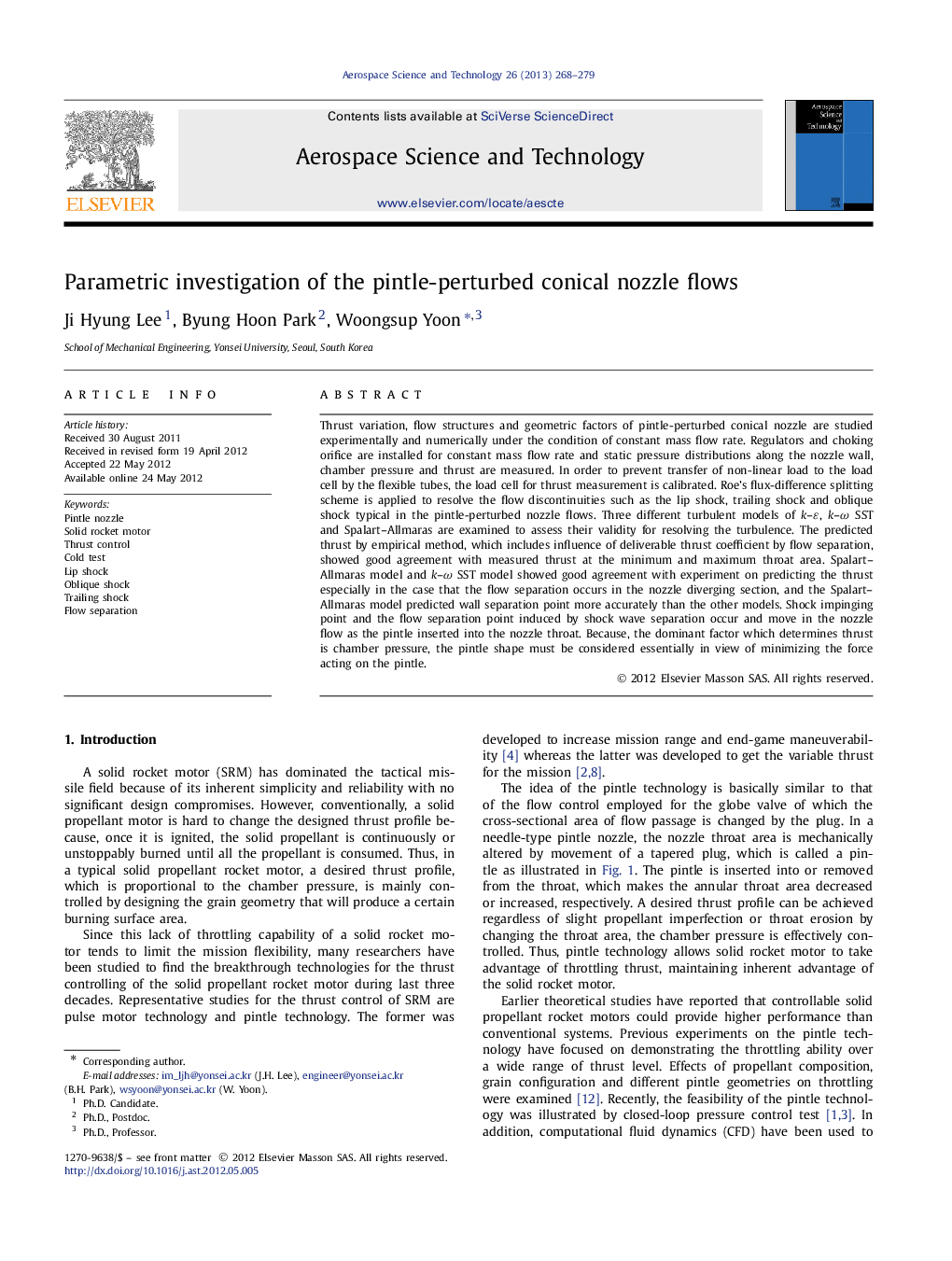| Article ID | Journal | Published Year | Pages | File Type |
|---|---|---|---|---|
| 1718424 | Aerospace Science and Technology | 2013 | 12 Pages |
Thrust variation, flow structures and geometric factors of pintle-perturbed conical nozzle are studied experimentally and numerically under the condition of constant mass flow rate. Regulators and choking orifice are installed for constant mass flow rate and static pressure distributions along the nozzle wall, chamber pressure and thrust are measured. In order to prevent transfer of non-linear load to the load cell by the flexible tubes, the load cell for thrust measurement is calibrated. Roeʼs flux-difference splitting scheme is applied to resolve the flow discontinuities such as the lip shock, trailing shock and oblique shock typical in the pintle-perturbed nozzle flows. Three different turbulent models of k–εk–ε, k–ωk–ω SST and Spalart–Allmaras are examined to assess their validity for resolving the turbulence. The predicted thrust by empirical method, which includes influence of deliverable thrust coefficient by flow separation, showed good agreement with measured thrust at the minimum and maximum throat area. Spalart–Allmaras model and k–ωk–ω SST model showed good agreement with experiment on predicting the thrust especially in the case that the flow separation occurs in the nozzle diverging section, and the Spalart–Allmaras model predicted wall separation point more accurately than the other models. Shock impinging point and the flow separation point induced by shock wave separation occur and move in the nozzle flow as the pintle inserted into the nozzle throat. Because, the dominant factor which determines thrust is chamber pressure, the pintle shape must be considered essentially in view of minimizing the force acting on the pintle.
